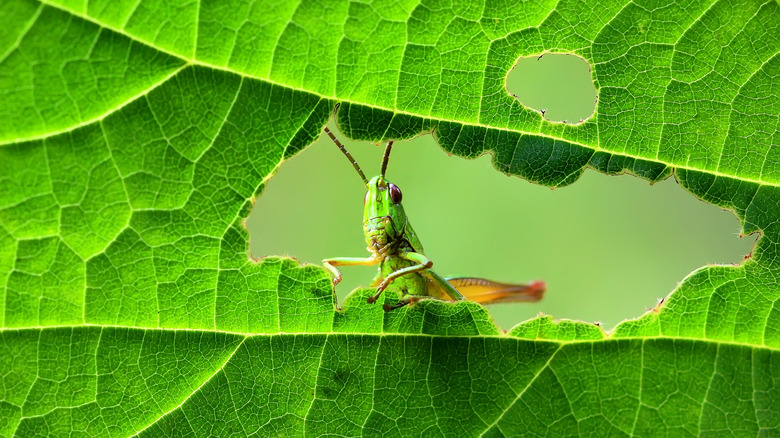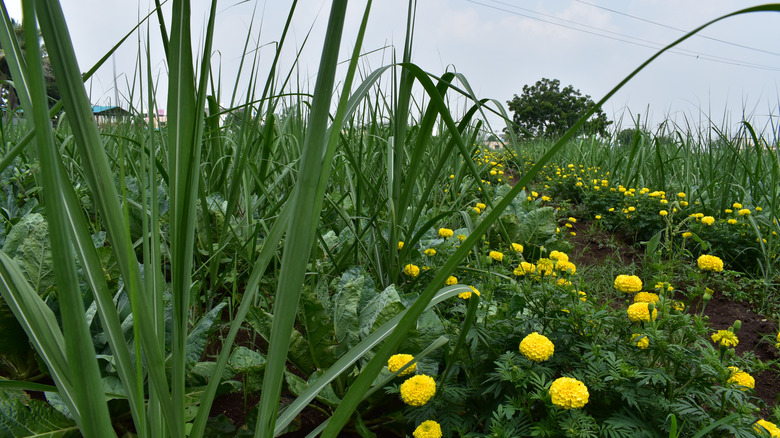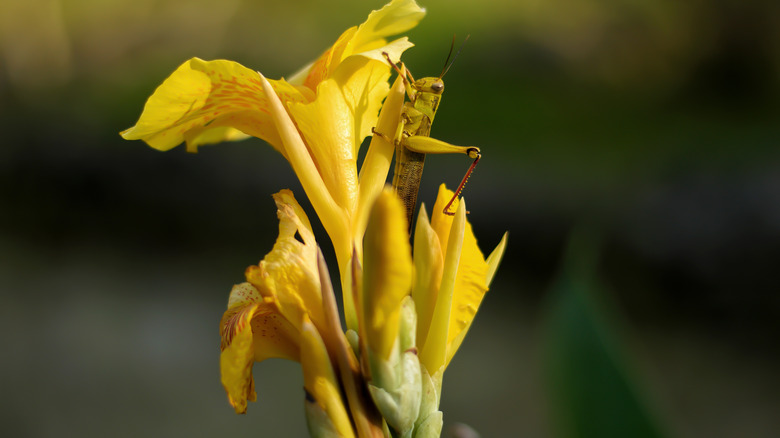Keep Grasshoppers From Invading Your Garden With A Trap Crop Border
Grasshoppers can pose a serious threat to the plants in your garden, especially lush green vegetables such as lettuces. Plus, they'll happily munch on the foliage of carrots, onions, corn, and beans. Grasshoppers are also fond of many of the flowers that you grow in your garden. But, you can manage these critters and stop them from munching away on your prized plants by growing a trap crop as a border around the plants that you want to protect.
By surrounding your garden beds with a border of plants that the grasshoppers will love, you can effectively stop them from moving onto the plants that you don't want them feeding on. Grasshoppers tend to do the most damage when rainfall has been sparse and your garden is looking lush and inviting. Their population can fluctuate from year to year. So while you might find a large population of grasshoppers in your garden for a couple of years, their numbers will usually fall for several years after that. But, even when population numbers are low, grasshoppers can still cause damage to your valuable plants if you don't find a way to control them. While you can keep hungry grasshoppers out of your garden with common kitchen ingredients, growing a trap crop is another good way to keep these pests off your favorite garden plants.
What is trap cropping?
Trap cropping is an effective integrated pest management strategy that has been used in agriculture and horticulture for many years. You can take this same strategy and employ it in your garden to keep the grasshoppers at bay. Trap cropping takes advantage of the knowledge that different insects will usually have a preference for certain types of plants. When their preferred plants are in abundance, they stick to these and leave other, less desirable, plants alone. But, if their preferred plants are not readily available, they'll just feed on what they can find.
So, growing a border of the grasshopper's favorite food source around your garden beds will keep the insects happily fed without the temptation to move on to the plants you want to protect. This means that you don't have to rely on using insecticides in your garden which, in turn, helps to protect the beneficial pollinators that you do want to attract. But, if you find that the population of grasshoppers in your trap crop multiplies rapidly, you can easily control them by spraying only the trap crop with insecticides rather than the edible plants you're growing. Trap crops are not only effective for protecting against grasshoppers. They are also one of the most natural ways to keep slugs off your precious flowers.
Plants that you can grow as an effective trap crop
There are plenty of plant varieties that you can grow as a border around your vegetable and flower garden beds to attract (and distract) grasshoppers. Tall grasses are perfect to grow as a trap crop, especially if you keep the border plants well irrigated so that the grasses are lush and green. Even smaller-growing grass-like plants like mondo grass can be very effective at trapping grasshoppers. These are easy to grow and are also an attractive border when planted close together. Other suitable plants that have grass-like leaves include amaryllis, canna lily, day lily, iris, and liriope.
You could also plant popular wildflowers such as bachelor's buttons as a border around your veggie and flower beds. Or grow plants that you can prune into hedges such as silverberry (Elaeagnus spp.), photinia, or hibiscus. You could even plant pollinator-attracting plants such as the butterfly bush around your garden plants but be careful not to spray these with insecticides because you don't want to harm the beneficial insects that these plants will attract. If you find that your trap crops are not effectively keeping grasshoppers at bay, you might need to work on other ways to get rid of grasshoppers from your garden.


